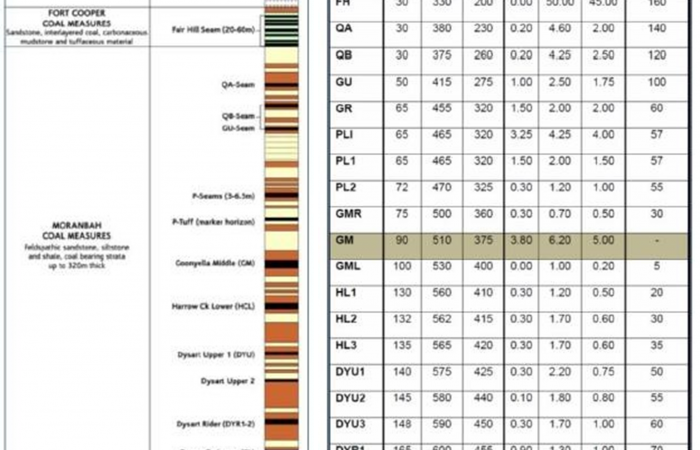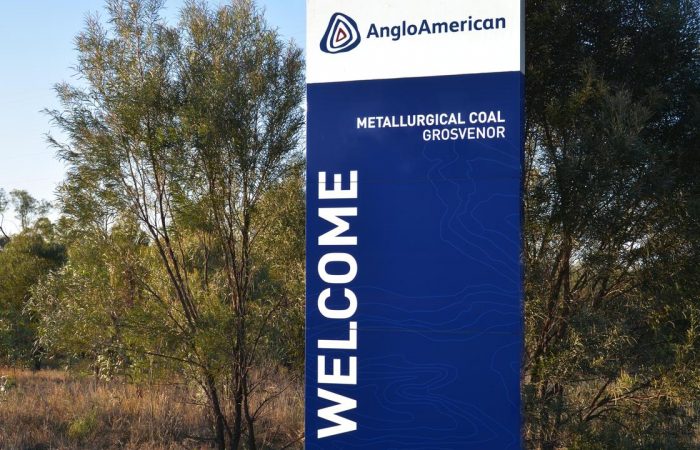
Grosvenor Longwall 103 Methane Inrush from Floor, 2,463m3 after 1 hour. Model suggests that the deepest below the floor that a seam may emit emissions from is 40m, his would include the GML and the Harrow Creek Lower Measures.
It is known that Grosvenor Mine has at least Two Methane Inrushes on the LW 103 face from the post July 1 2019 Longwall Methane HPI’s tendered as evidence at the Grosvenor Inquest detail.
The LW 104 Second Workings Notice to the RSHQ Inspectorate in March 2020 states
No pre drainage of the GML seam has been conducted for LW104. The GML is expected to release gas due to the reservoir size combined with proximity to the working seam between Ch4000 and Ch2000 (MG104 20-36c/t)
There is no mention of other floor seams such as the Harrow Creek at all.
The Chainage for first on the 11th of July, is not identified, but the HPI from the 23rd of July identifies the Chainage as 1580m on the 23rd.
The second on the 7th of November 2019. The Methane HPI from 19th of October the chainage was 580m approximately so the chainage is obviously less than that on the 7th of November.
The two events were separated by around 1000m (1km of retreat distance).
The biggest of these was on the 11th of July and released approximately 2,463m3 after 1 hour and 4,790m3 7.5 hours (inclusive of the first hour).
In the LFI for the 7th of November there is a section titled
Geotechnical Assessment
Floor fracturing behind/underneath a longwall face has not been studied extensively due to the operational limitations surrounding such research. No specific study has been performed for Grosvenor to date that identifies the extent of potential floor fracturing; as such a literature review has been performed to identify how deep floor fractures can reasonable extend under a longwall retreat scenario.
In addition to this, there are varying models that can be used for the prediction of the degree of gas emissions from overlying and underlying seams in a longwall operation. One such model is the Flugge model, as shown below.
The Flugge Model was Extensively referred to during the Grosvenor Inquiry.
The Assessment Section makes the following points in conclusion
This model suggests that the deepest below the floor that a seam may emit emissions from is 40m.
In the zone for this LFI, this would include the GML and the Harrow Creek Lower Measures (see Appendix: Stratigraphy).
Information suggests the this event was not caused by a localized geological structure.
Despite the findings of their own Investigation that methane emissions from seams up to 40 m (GML and Harrow Creek Seams) that there will be no measures taken to drain the methane gas from these seams in the LW 104 Second Workings SOP being inbye 20c/t
In the Second Workings Notices to the Mines Department on 6th of March 2020, the Anglo Management state.
No pre drainage of the GML seam has been conducted for LW104. The GML is expected to release gas due to the reservoir size combined with proximity to the working seam between Ch4000 and Ch2000 (MG104 20-36c/t)
There is No mention the Harrow Creek seam at all.
It is almost like the LFI from the 7th of November never existed at all and both Anglo Grosvenor Management and the Mines Inspectors had not read the LFI and its findings at all
No objections were raised by the Mines Inspectorate, as the LFI’s for the 6th May 2020 LW 104 Face Methane Ignition and 8th June Explosion states and has been related during the Grosvenor Inquiry.
Anglo Management made the conscious and deliberate decision that there was an acceptable level of risk to Mineworkers Longwall Mining 104 block without dealing with the floor seam emissions after the 2 Inrushes on LW 103 face.
Only Anglo Management is aware of their obviously flawed reasoning to arrive at that conclusion.
Only the Mines Inspectorate can explain why they never raised objections
AAMC.001.003.0254 LFI IN.00205198 LW103 TG CH4 Gas Exceedance
On the 11 of July 2019 during normal production, a floor blower became active at #55 roof support in the rear of the support after mining past the area and advancing the face. The methane released was calculated to have released approximately 2,463m3 after 1 hour and 4,790m3 7.5 hours (inclusive of the first hour). The release of methane tripped face power at the tailgate drive sensors and at 01:37 peaked at 2.79% the inbye shearer CH4 sensor.
On the 19th of October the chainage was 580M approximately so the chainage is obviously less than that on the 7th of November.
AAMC.001.009.0556 LFI IN.00211941
On Thursday the 7th of November during normal production, the shearer on the LW103 face was travelling to the MG (cutting bi-directional) when at roof support #9, a floor blower became active at roof supports #22 and #55 after mining past the area and advancing the face. The tailgate drive sensors at 03:04 went above 2.0% tripping face power. The methane monitor in the TG roadway peaked at 2.73% at 03:08am.
The methane calculated to have released into the mine’s general body atmosphere was approximately 1,504m3 after 2 hours before returning to normal background levels.
In addition to this, there are varying models that can be used for the prediction of the degree of gas emissions from overlying and underlying seams in a longwall operation. One such model is the Flugge model, as shown below.
This model suggests that the deepest below the floor that a seam may emit emissions from is 40m. This is in a similar range to the value derived from the empirical model by Bai & Tu for estimating floor fracturing creating a hydraulic conduit for gas to flow from underlying seams. As such it can be concluded that seams up to 40m below the seam floor should be considered for potential to emit gas into the LW working area/goaf. In the zone for this LFI, this would include the GML and the Harrow Creek Lower Measures (see Appendix: Stratigraphy).


